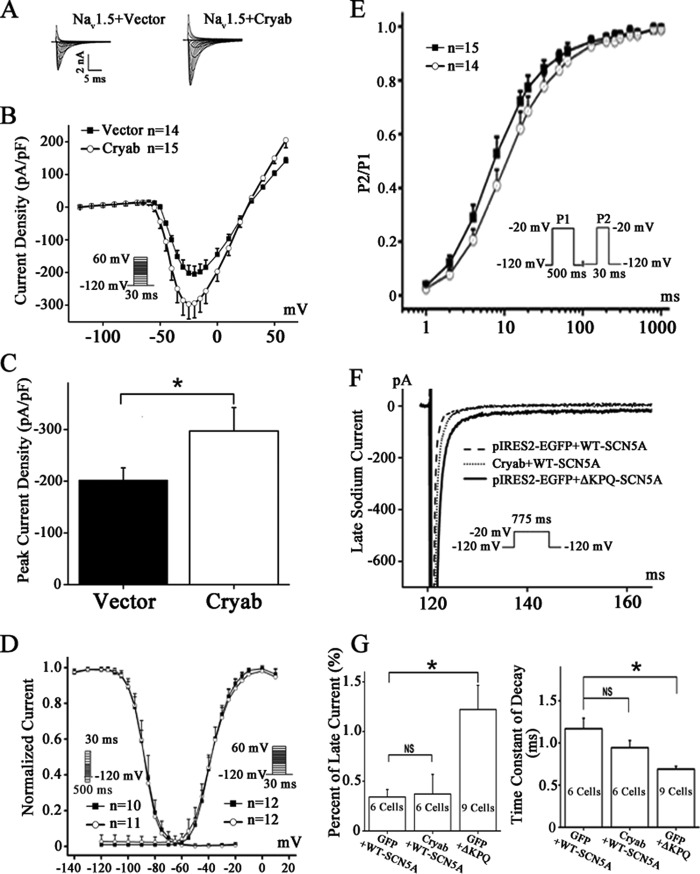FIGURE 3.
Functional effects of αB-crystallin on INa in HEK/Nav1.5 cells. A, representative whole-cell sodium currents recorded from HEK/Nav1.5 cells transfected with the control vector or a αB-crystallin overexpression plasmid. The voltage clamp protocol is shown in the inset. B, the relationship of average current densities (current normalized to cell capacitance) and voltage. C, peak sodium current densities at −25 mV. D, steady-state activation and inactivation curves. The holding potential was −120 mV. The protocol for recording the steady-state activation and inactivation curves is shown in the inset. E, time course of recovery from inactivation was studied using a two-pulse protocol of −20 mV at the −120 mV holding potential as in the inset. F and G, representative late INa recorded at the −20 mV test potential from HEK293 cells with co-expression of wild type SCN5A with the control vector or the αB-crystallin expression plasmid. The ΔKPQ mutation associated with long QT syndrome, which is known to generate large late INa, was used as a positive control. Note that overexpression of αB-crystallin did not impact the generation of late INa; αB-crystallin slowed the rate of decay, although the effect did not reach a significant level. Data are shown as means ± S.E. (error bars). NS, not significant; *, p < 0.05. All studies were repeated at least three times. pF, picofarads.

